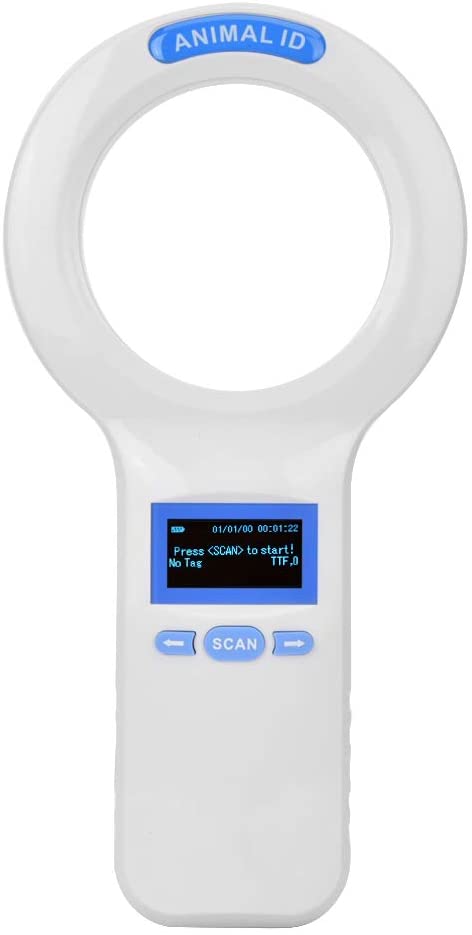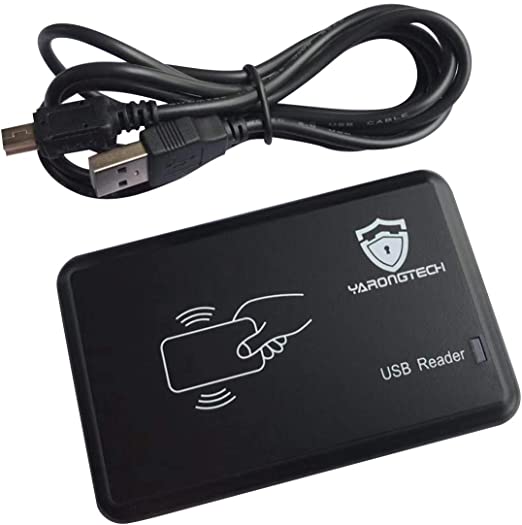Low Frequency RFID vs. High Frequency RFID: The Top 8 Differences
Low Frequency RFID and High Frequency RFID are two types of Passive RFID that have a shorter read range compared to UHF RFID, but are both still very popular for specific applications. Because these two RFID frequencies are very similar in how they operate, it can be hard to tell the differences between Low Frequency (LF) RFID and High Frequency (HF) RFID. In this article, we will walk through the 8 most common differences between the functionality of these two options in order to help you decide which one is best for your RFID application.
To read more about Passive RFID and what it is, checkout our article Passive RFID: What Does It Mean?
#1 - Frequency Range
One of the most obvious differences between Low Frequency RFID and High Frequency RFID is the frequency range on which the tags and readers communicate. Low Frequency RFID typically operates between 125 kHz and 134 kHz, but the overall, larger range is between 30 kHz and 300 kHz. The actual frequency band that you use will depend on your country’s specific standards.
The full range for High Frequency RFID is between 3 and 30 MHz, but because Near-Field Communication (NFC) is the most popular type of High Frequency RFID and a worldwide standard, most HF and NFC tags operate only on the 13.56 MHz band.
- Low Frequency RFID - 125 - 134 kHz (30 - 300 kHz)
- High Frequency RFID - 13.56 MHz (3 - 30 MHz)
Learn more about Near-Field Communication on our NFC Hub Page, which contains all of our NFC articles, videos, and tutorials.
#2 - Data Rates
Data rates, also known as data-transfer rates, describe how fast the data from the tag can be transferred to the RFID reader. When comparing the data rates of Low Frequency RFID and High Frequency RFID applications, Low Frequency RFID data rates are much slower.
- Low Frequency RFID - Very slow communication: Typically less than 10 kbit/s
- High Frequency RFID - Moderate speed communication: 424 kbit/s
#3 - Write Capabilities
Most High Frequency RFID tags, including NFC tags, have data that can be read and re-written hundreds of times, but the same cannot be said for Low Frequency RFID tags. LF tags are most often purchased with read-only data on their memory banks, which typically consists of a simple pre-encoded tag ID. This type of tag is referred to as a read-only tag, which is the standard format for Low Frequency RFID tags.
- Low Frequency RFID - Read-only tags (most often)
- High Frequency RFID - Read/Write tags
Checkout some examples of High Frequency RFID tags.
#4 - Environmental Concerns
If you are familiar with Passive UHF RFID tags, you are aware that these tags must be used with precautions around metal, liquids, and other difficult environmental factors. UHF RFID tags must use some form of mitigation to work properly with metals and liquids to prevent complications like de-tuning and multipath; however, LF and HF RFID tags do not have the same problem to that extent.
Low Frequency RFID tags work very well with liquids, in fact, most can be read when submerged in water or embedded under the skin (i.e. animal tracking/pet identification), and also have no problem being read when placed near metal materials. High Frequency RFID tags are not quite as tolerable to the same elements, and will not be able to be read submerged in water. In order to find out the exact tolerances that High Frequency RFID tags have for water and metal, testing specific tags on different materials is suggested.
- Low Frequency RFID - High tolerance to water and metal, can even be submerged in water
- High Frequency RFID - Medium tolerance to water and metal, not guaranteed to work on metal surfaces
#5 - Read Range
Both Low Frequency RFID and High Frequency RFID are short range RFID frequencies, and neither one can reliably read tags over 1 foot in read distance. In some RFID applications, small differences like inches or millimeters can make a huge difference, which is why it is important to call out even the small read range differences between these two frequencies.
Low Frequency RFID tags can only be read a few inches away from an LF RFID Reader, generally from contact up to around 6 inches. High Frequency RFID tags can be read anywhere from contact up to about 12 inches in distance from the HF/NFC Reader.
- Low Frequency RFID - Contact up to 6 inches in read range
- High Frequency RFID - Contact up to 12 inches in read range
#6 - Tag Formats
High Frequency RFID tags and Low Frequency RFID tags can vary in regards to tag form factors. Because both frequencies are used for access control, key fobs and plastic cards are some of the most popular tag form factors for both High Frequency and Low Frequency RFID tags. Besides cards and key fobs, Low Frequency tag form factors are most often sold as embeddable glass capsules or ear tags for animal tracking. In High Frequency RFID, specifically NFC, the most popular form factor is typically inlays because they can be attached to most types of materials and are flexible.
- Low Frequency RFID Tags - Cards, Key fobs, Disks, Embeddable Glass (Bioglass), Inlays, Plastic Ear Tags
- High Frequency RFID Tags - Cards, Key fobs, Disks, Inlays, Plastic Hard Tags
#7 - RFID Applications
High Frequency RFID has a wider variety of applications because it has a longer read range, and the ability to use a global standard frequency - 13.56 MHz. Some of the most popular RFID applications that use High Frequency RFID are:
⁃ Library Books/Media Tracking⁃ Marketing - Smart Posters & Ads
⁃ Ticketing - Public Transportation & Events
⁃ Payments
Click on one of the links above or below to jump to an article about that RFID application.
Even though High Frequency RFID is used in more applications than Low Frequency RFID generally is, Low Frequency’s animal tracking (i.e. pet/livestock identification) applications is one of the most popular RFID applications available. Low Frequency RFID applications include:
⁃ Automotive Control
#8 - RFID Hardware
As with all RFID frequencies, High Frequency RFID and Low Frequency RFID will each have different RFID hardware requirements. Fortunately, in comparison to UHF RFID hardware, both Low Frequency and High Frequency RFID readers typically have a lower price point, and have the benefit of typically having a built-in antenna.

Low Frequency RFID readers are available in a few different form factors, but are primarily available as a handheld reader with a circular extension at the top (above). This form factor is the most popular because it is used to scan LF animal identification tags.

High Frequency RFID readers are primarily available as key fob/plastic card readers that can be attached to a wall or doorway, or as small USB readers that directly plug into your computer (above). If you are using NFC or 13.56 MHz, the most cost effective option is to use your smartphone’s integrated NFC reader.
- Low Frequency RFID Readers - Handheld RFID Readers in handheld wand-type form factors
- High Frequency RFID Readers- Doorway RFID Readers, USB RFID Readers, or a Smartphone’s integrated NFC Reader
Conclusion
For more information about High Frequency RFID and Low Frequency RFID, checkout the articles below or contact us for more information!
